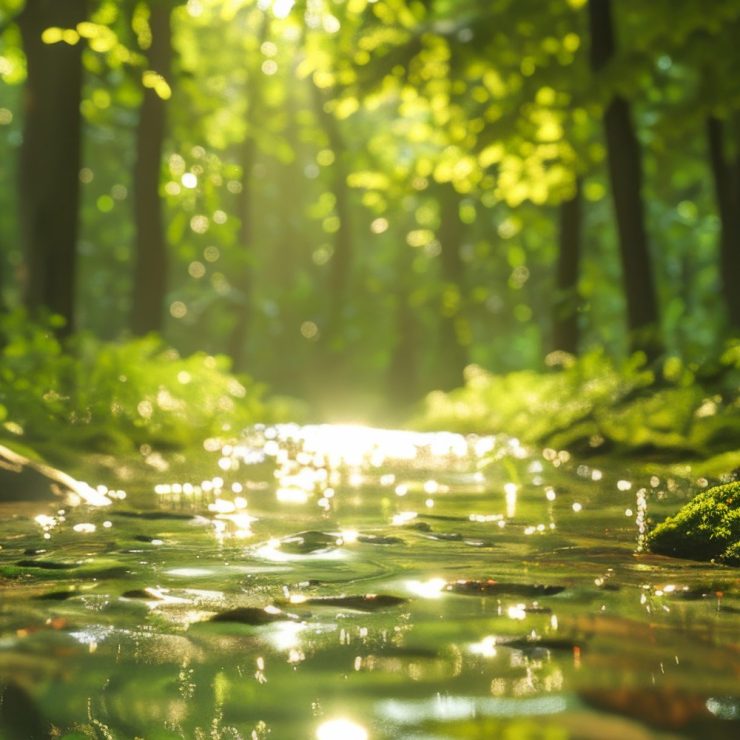By: Drew Altland, PE
Centuries ago, physical and ecological damage to me and my inhabitants began. The last time I remember my life being secure and stable was back in the 1600s. Back then my small channels were typically inches deep and conveyed cold pristine water which bustled with reproducing insects and fish. My wide floodplain was composed of wetland soils that formed over thousands of years following the warming period after the last ice age. During these years of warming, my floodplain formed by slowly accreting wetland soil over a valley bottom gravel/sand layer (aquifer). My wetland soils trapped and stored each year’s decaying vegetative growth and the materials supplied from the forested watershed over thousands of years. My floodplain was dominated by native wetland plants typically composed of herbs and shrubs. Cold water seeped from my valley walls and bubbled up from under the aquifer underlaying my floodplain and streambed. Beavers moved in and out of my floodplain over time. Their dams were typically built along the floodplain margins where they often captured spring seeps and tributary flows as this is where most of the larger woody material was located for food and building supplies. These dams formed deep water habitats where fish inhabitants spawned and thrived. My ecosystem was highly stable, and wildlife flourished for thousands and thousands of years.
In the late 1600s to early 1700s things started to change dramatically. European settlers started showing up in droves. These settlers were fond of the virgin timber along my hillsides and started to clearcut soon after arrival. The stumps were ripped out to plant crops. Beavers were trapped and killed to near extinction. My pristine waters started to flow muddy brown during storm events. When the runoff receded, muddy remnants were left behind on the floodplain and clogged my streambed. Hillsides were rapidly converting from forest to agricultural lands. My shallow multi-threaded channels were being straightened, ditched, and relocated. My wet floodplain was drained to grow crops. The fish and insects that inhabited once pristine waters started to disappear and become less prolific each consecutive season.
The abuse ramped up tremendously in the 1800s. To accommodate a rapidly growing population, the need for industrial power to process timber, grains and other businesses became paramount. As such, the construction of mill dams exploded. Dams were constructed all the way across my floodplain spanning hundreds of feet to pond water on the floodplain to power water wheels for each workday. My remaining wetland vegetation was immediately submerged under many feet of water. Additionally, large channels were cut into the hillsides whose primary purpose was to feed water to/from the mill house waterwheel. Of course, all the while rapid dam building was transpiring, the soil erosion from hillsides continued to produce tons of mud during storm events. Mud eventually filled the millponds layer by layer with each storm until my pristine eco-system was buried under many feet of mud and water. Over time, the density of milldams increased so much that millponds often lapped each other as the population grew and expanded.
By the early 1900s the need for mill power subsided and the dams started to fall into disrepair. Dams crumbled and breached or were ripped out or blasted with dynamite, unleashing a bombardment of mud and waste from past centuries of accumulation. New stream channels formed by incising into the accumulated mud, leading to high stream banks and sustained erosive conditions. Now instead of my channels only being inches in depth, new deep channels formed that were highly unstable. As the streambeds lowered along with the water level in the deep channel, my floodplain transformed to a high terrace of dirt that converted the vegetative community to upland plants. Large storms were now conveyed within my massive channel, which perpetuated channel enlargement along with high loads of sediment and nutrients delivered to downstream receiving waters.
Next week our neighborhood stream will continue this session to shed light on the modern insults endured, research, misconceptions, and outlook for recovery in Neighborhood Stream POV – Part 2 of 2.
